From roots to horns, building theory

Darwin published a year later the famous book 'The origin of species by natural selection', but it was "sin": Darwin and Wallace did not need God to explain how all species scattered throughout the world emerged. And that meant a revolution in the society of the time. And it is that the idea that God made the world and all living things of the world for six days was deeply rooted.
However, the idea of evolution was not entirely new and some believers recognized that some species were believed to be different. For example, this idea was quite widespread in the XVIII. Among the geologists and thinkers of the twentieth century, one of them was the grandfather of Charles Darwin, Erasmus Darwin.
And long before, nineteen centuries earlier, the Greek philosopher Anaximandro and the Roman Lucretius proposed that the species were interrelated and eventually transformed. It is also surprising that some ideas of the time are so similar to those of today. However, two thousand years have passed, and until the last century the belief has prevailed that all living beings have been created by God as they are now.
Natural selection
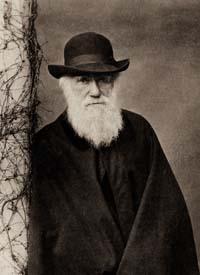
Today there are those who deny evolution or believe that behind it there is God, but from Darwin there is no need for the gods to explain how species have been created and how they evolve. Precisely this was his greatest contribution (and that of Wallace): he proposed a mechanism of evolution. And that mechanism was nothing heavenly, but quite the opposite. It was a natural selection.
By then, Thomas Malthus wrote an essay on the principle of the Population. Malthus was concerned that the man was growing faster than food. On the basis of this, Darwin proposed that living beings fight for resources and that those with some advantage advance. Somehow, they are the ones with the most possibilities of reproduction, so their characteristics are transmitted to the next generation.
This allows the improvement of species, giving rise to morphological changes in this process. However, the improvement of species does not mean that they have a goal, for Darwin it is better to be able to adapt better than the rest, adapt better to the environment.
In addition to natural selection, Darwin published another important concept: all species have the same origin, whether unicellular, cherry, jellyfish or dogs.
And genetics have managed to prove it because all living beings have the same genetic code, that is, in the heart of cells there is DNA and its components are equal in all forms of life. Unfortunately, Darwin did not know the molecule that claimed the proposal, since James Watson and Francis Crick presented the structure of DNA 71 years after his death.
The strength of the mutation
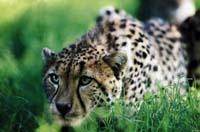
Thus, XX. The combination of advances in genetics from Mendel and Darwin's ideas in the first half of the century led to a new way of explaining and understanding evolution. Theodosius Dobzhansky, Ernst Mayr, George Gaylord Simpson and other scientists developed it and called it a new synthesis or neo-Darwinism.
According to the new synthesis, the main motor of evolution is mutation. Mutations are random and permanent changes in the genetic material. Some (most) do not produce significant changes, but others affect the survival or reproduction capacity of the individual who has suffered mutation, for good or for evil.
For example, if this mutation allows you to cope with a disease, or gives you some other kind of benefit, by natural choice, that individual will have more chances to advance than others. Therefore, this mutation will have a "success", that is, it will also appear in the following generations if it is hereditary.
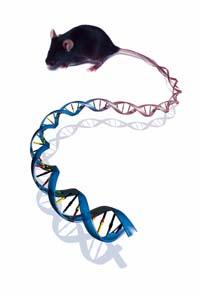
For its part, the characteristics generated by mutation in its extension to the population are influenced by gene flow and gene drift. Gene flow is the migration of genes between populations, and the variant that is transmitted to the next generation through the variants of the same gene, at the crossroads. Both mechanisms reduce or increase the genetic frequency of a feature.
Selfishness of the genes
On the other hand, extreme importance of genes, in 1976 the ethologist Richard Dawkins, author of the Selfish Gene. According to him, evolution does not affect individuals but genes. Thus, the gene is the information unit that is transmitted by inheritance, and organisms are just gene storage machines.
Through the expression "selfish gene" he suggested that the "success" of a gene depends on its ability to adapt to the environment. The gene that gives the individual more possibilities to reproduce will appear more and more frequently in the following generations.
To explain the theory of the selfish gene, the dilemma of egg and chicken has been used. Somehow, from the point of view of Dawkins, the hen is the medium that uses the egg itself to produce its eggs.
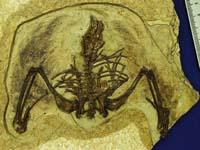
Sudden changes in changes
In 1972, Niles Eldredge and Stephen J. Paleontologists Gould published the theory called taiduna equilibrium. According to this theory, evolution is not only due to slow adaptations little by little, but to sudden changes.
This explains, to some extent, why there are gaps in the fossil record. In fact, fossils do not show a continuous succession in which species change gradually. On the contrary, in the geological layers it is observed that the species are themselves stable and that most of the changes occur when new species are created.
In any case, the tacit equilibrium does not go against the Darwinism of the new synthesis, but Darwin himself saw that the fossil record did not correspond to the idea that the species were gradually transforming and although he hoped that in time the fossil record would be completed, he had that concern. In addition, Eldredge and Gould were based on an allopathic model for the creation of new species.

The allopathic model was proposed by one of the theoreticians of the new synthesis, the mathematician Sewall Wright, developed by the prestigious ornithologist and evolutionist Ernst Mayr. According to the allopathic model, the new species do not arise from a progressive transformation of an entire previous species. On the contrary, when a small group living in a corner of the population is isolated, there are rapid changes that give rise to a new species.
It must be taken into account, however, that for Eldredge and Gould the quick speciation can last 10,000 years or more. On the geological scale it is little time, but sufficient for the natural selection to have effect.
More than against, together
Therefore, more than contradictory theories, ideas often arise that innovate and enrich the theory of evolution. Some have been rejected at the time when they were published, but on several occasions, evidence has been found to prove their validity.
This is approximately what has happened with the hopeful monsters of Richard Goldschmitdt. In 1940, this evolutionist proposed the theory of macromutation: the new species were formed by sudden jumps. Far from the progressive changes of Darwinism, many ruled out this phenomenon that produced the monster.
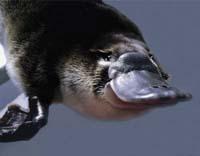
The researchers continue to ask and from all the answers that arise, they advance those that best adapt to reality and our vision of reality. Somehow, as living beings evolve.
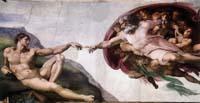
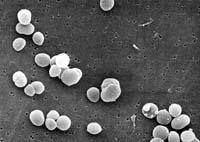
Buletina
Bidali zure helbide elektronikoa eta jaso asteroko buletina zure sarrera-ontzian











